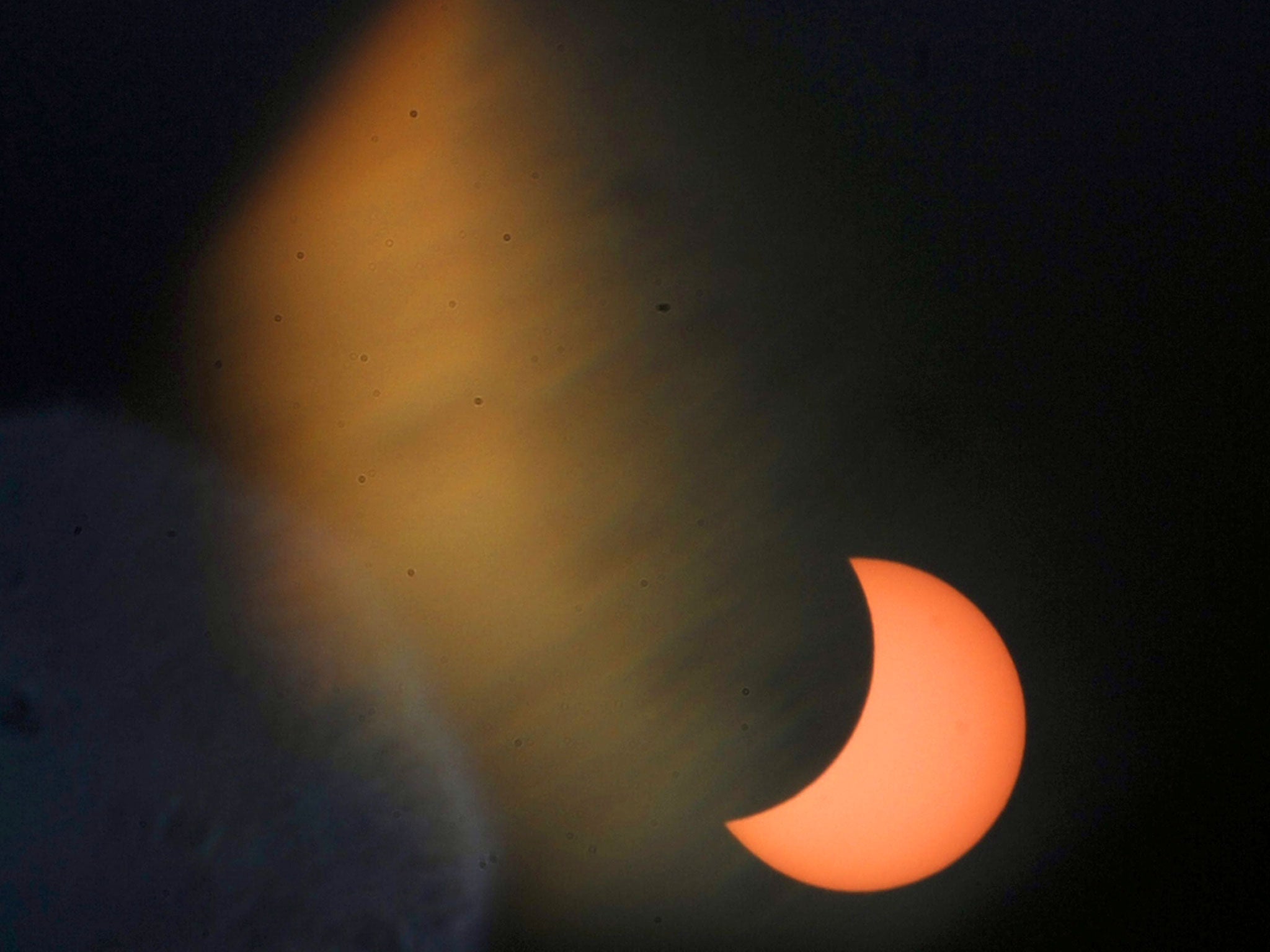Partial solar eclipse blocks out the sun, as stargazers get ready for blood moon and supermoon
The eclipse was only visible in southern Africa – but is set to be followed by much more spectacular events later this month

Your support helps us to tell the story
From reproductive rights to climate change to Big Tech, The Independent is on the ground when the story is developing. Whether it's investigating the financials of Elon Musk's pro-Trump PAC or producing our latest documentary, 'The A Word', which shines a light on the American women fighting for reproductive rights, we know how important it is to parse out the facts from the messaging.
At such a critical moment in US history, we need reporters on the ground. Your donation allows us to keep sending journalists to speak to both sides of the story.
The Independent is trusted by Americans across the entire political spectrum. And unlike many other quality news outlets, we choose not to lock Americans out of our reporting and analysis with paywalls. We believe quality journalism should be available to everyone, paid for by those who can afford it.
Your support makes all the difference.A partial solar eclipse has blocked out the sun, the first part of a month of stunning astronomical events.
The second solar eclipse of the year happened this morning, leaving stunning views over southern Africa and Antarctica.
But it is likely to be eclipsed itself by a rare astronomical event at the end of the month – a so-called supermoon where it will appear far bigger than usual, and a lunar eclipse that will mean that it is blocked out. The events are set to be so spectacular that some online have even taken to claiming they signal the end of the world.
The solar eclipse was only visible in the sky to those in the southern part of Africa – including people in South Africa, Mozambique, Zambia, Zimbabwe and Madagascar – and in Antarctica. But livestreams and photos allowed anyone to tune into the eclipse as it happened, and stunning pictures have been shared after the event.
The next solar eclipse will happen on March 9, 2016, and will be visible in Asia, Australia and the Pacific and total in Sumatra, Borneo, Sulawesi, Pacific. That eclipse will be almost exactly a year after the last one – a total eclipse that was visible across Europe.
But that’s far from the next exciting astronomical event in the calendar. On the night of September 27-28, there will be a number of strange goings in the sky – both a lunar eclipse and a super moon, which will mean that the moon is at the darkest and lightest it has been all year, in the same night.
And in 2017, there will be a solar eclipse over America that will bring the biggest single movement of people for tourism in human history.
Join our commenting forum
Join thought-provoking conversations, follow other Independent readers and see their replies
Comments